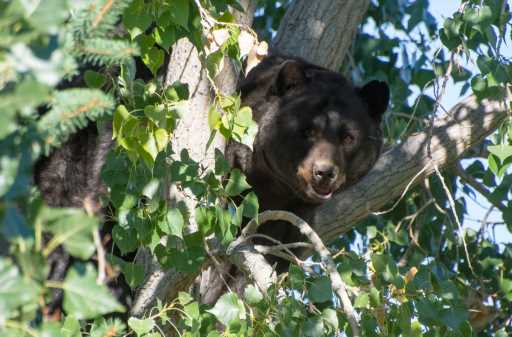
Lip gloss left inside a vehicle led a bear to tear through two cars last week in Larkspur, rooting out the smell and searching for a possible food source.
The incident was reported to Colorado Parks and Wildlife on Friday. The reporting party told wildlife officials that no food or trash, which is known to draw bears, was in either of the vehicles.
“Bears know how to open car doors,” CPW said on Twitter. “There was no food/trash left inside here, but there was lip gloss. Its scent was enough to entice the bear to check it out. Keep unwanted guests out of your cars by locking the doors & removing anything with a scent.”
Non-food items left in cars that can lure bears include sunscreen, lip balm, air fresheners and lotions.
The state’s black bear population is out of hibernation, and wildlife officials are reminding the public about measures to take to avoid property damage and conflicts as bears search for food.
Colorado Parks and Wildlife has received reports of bear activity in 16 counties this year, according to a news release. While viewing a bear in the wild is a thrill, encounters with people, including with homeowners who reside in bear habitat, can be problematic for humans and the bear.
Bears have been known to break into vehicles and homes, destroying interiors as they search for a food source, typically after being led to the area by a scent.
Wildlife officials are urging residents to secure any and all attractants. Bears should not be eating from trash receptacles, bird feeders or other human-provided food sources around homes or businesses.
Bear sightings and conflicts were down 28% statewide in 2021 compared with the previous two years — and much of the activity could be traced to driest parts of Colorado. Bears rely on grasses, berries, fruits, nuts and plants for their diet, all of which are dependent on moisture.
Bears shouldn’t be feeding from trash receptacles, bird feeders or other human-provided food sources around homes or businesses, the CPW said.
“Every time a bear gets a treat, a bird feeder, a hummingbird feeder, or trash, it teaches the bear that people mean food,” said Mark Lamb, a CPW manager. “People who think that it’s one time, no big deal, are totally wrong. It is a big deal when you compound that ‘one time’ with how many ‘one timers’ they get from your neighbors, too. It adds up.”
Tips to prevent human/bear conflicts include:
- Keep garbage in a well-secured enclosure.
- Don’t leave garbage out overnight, bring empty cans back in before dark.
- Use a bear-resistant trash can or dumpster.
- Clean all garbage cans regularly; the scent of ammonia can deter bears.
- Don’t leave pet food or stock feed outside – never provide food sources for any wildlife.
- Take down all bird feeders.
Bird feeders are a major source of bear and human conflicts, according to the CPW. Between 2019 and 2021, there were 1,073 conflicts involving feeders reported in Colorado.
“Birds have naturally available food sources during the spring, summer and fall,” the CPW said. “Don’t let your bird feeder become a bear feeder.”
Subscribe to our weekly newsletter, The Adventurist, to get outdoors news sent straight to your inbox.
Source: Read Full Article









